|
|
|
IAI 2024 Conference Registration is now Open!
At the IAI website theIAI.org click on Conference to see a pull-down menu where you can select IAI 2024 Reno Conference. At that page, click on the Register Now button and you will see a multitude of options including lots of workshops.
Register early because the popular workshops fill up quickly.
Fingerprint Dictionary
Michele Triplett's Fingerprint Dictionary has a new address:
www.fingerprintdictionary.com
For more than two decades, the Fingerprint Dictionary
has served as a valuable resource for latent print examiners and others
seeking fingerprint information. It is routinely updated with new
explanations/definitions of
acronyms, anatomy, chemicals, classification terms, scientific terms,
historical people, court cases and much more!
2024
IAI Conference
Reno, Nevada

August 11-17, 2024 - Click here for the latest information.
Latent
Print
Examiner Job Openings
in order by closing date
in alphabetical order for
"open until filled" jobs
Santa Ana, CA Police
Department - Latent Print Examiner (Part Time)
Open until filled
Multiple Agencies via Government Jobs -
Latent Print Examiner
Open
until filled
Tenprint
Examiner Job Openings
in order by closing date
in alphabetical order for
"open until filled" jobs
Towson,
MD Police Department - Fingerprint Technician (Tenprint Examiner)
Open
until filled
Complex Impression Comparisons Involving Joseph Webster
Texas Forensic Science Commission Report
The
above link opens a 108-page PDF file of the October 2023 report,
including details about a problematic comparison worked on by
multiple well-respected Latent Print Examiners. The latent palmprint
involved suspected blood and there are multiple images
with varying ridge detail clarity... and two different record
palmprints (also with varying clarity) received for comparison.
Jump to page 52 (page 48 printed in the bottom right corner) to see
multiple images of the latent palmprint... and you can see the two
different record palmprints on page 48 (page 44 printed in the bottom
right corner).
Perhaps the most important part of the report is the recommendations starting on page 71 (page 67 printed in the bottom right corner). Spoiler alert... many of the recommendations involve following NIST OSAC Friction Ridge Subcommittee standards, guidelines, and best practices.
2023
IAI Conference Presentations
Rating
the Complexity of Fingerprint Comparisons
Presented by Michele
Triplett, CLPE, Forensic Operations Manager, King County Regional AFIS
Program, Seattle, WA
August
2023 at the IAI Conference
The
increased scrutiny of forensic conclusions requires a more transparent
expression of conclusions. The days of denying that some conclusions
are not supported as well as others is over. This presentation will
give attendees exposure to a system of measuring the complexity of
their comparisons, not based on their personal opinions, experience,
and training but on the key factors of the data being examined. Knowing
how to consistently rate the level of complexity in casework will allow
practitioners to apply appropriate quality measures and express
conclusions in a fair and impartial manner.
Are
we following the same path that got us in trouble?
Presented by Michele
Triplett, CLPE, Forensic Operations Manager, King County Regional AFIS
Program, Seattle, WA
August
2023 at the IAI Conference
In
2013, many of the Scientific Working Groups (SWGs) were disbanded and funding was given to
NIST/OSAC to create national standards for various forensic
disciplines. Practitioners were excited and expected to see
improvements that would solidify their area of expertise. After waiting
8 years, are the newly proposed standards improvements, or merely new
dogma? This presentation will educate practitioners on past issues and
highlight how the newly proposed standards have failed to rectify the
problems of the past.
Getting
National Quality Assurance Recognition for Your Latent Print Unit
Presented by Jack
Flanders, Ed German, Bert Rivera, Maria Ruggiero and Henry Swofford
August
2023 at the IAI Conference
These
slides urge latent print units
(especially smaller offices which are not in accredited laboratories)
to read, evaluate, and (when they consider it appropriate) implement
OSAC standards and best practice recommendations.
The report “Strengthening
Forensic
Science in the United States - A Path Forward,” explained on page 200
that approximately two-thirds of latent print examination work in
America occurs outside accredited laboratories. This presentation
explains how most latent print examination units can achieve
national-level quality assurance recognition by leveraging NIST OSAC’s
registry implementation process. The IAI encourages all forensic
science service providers to incorporate standards on the NIST OSAC
registry to the largest extent possible.
The
Balloran Effect - Using Free Software for a "New Perspective"
on Poor Quality Latent Prints
Presented by Ed
German, CLPE, Macon County (Illinois) Sheriff's Office
August
2023 at the IAI Conference
Most
Windows operating system
computers include free software permitting a great variety of
perspective viewing for complex latent prints. Sometimes these views
reveal previously unnoticed minutiae. This presentation resulted from
information received during a personal conversation (circa 1978) with Latent Print
Unit Supervisor Pablo Balloran during a visit to the Philippines National Bureau of
Investigation Laboratory in Manila.
Beyond
Mayfield: Wrongful Convictions Due to Fingerprint Errors (2022 Update)
Presented by Hillary
Daluz, Latent Print Examiner
August
2022 at the IAI Conference
High-profile
erroneous fingerprint
identifications such as Mayfield and McKie have illuminated limitations
of the fingerprint examination discipline and inspired progress.
But did you know that Mayfield and McKie are not the only cases of
erroneous source identification or wrongful conviction? Are you
prepared to address these cases on the witness stand? This lecture goes
beyond Mayfield and McKie and discusses lessons learned to help
mitigate future errors.
Curriculum
Vitae: Make Your First Impression Your Best Impression (2022 update)
Presented by Hillary
Daluz, Latent Print Examiner
August
2022 at the IAI Conference
Recommendations
for what to include on your cv to make the best impression. Formatting
and
content tips, such as keep formatting simple, reverse chronological
order, get feedback from
colleagues/mentors, and more...
Automated Quality Metrics and Probabilistic
Models in
Friction Ridge Examination: A Practical Guide to Implementation
Presented by Henry
Swofford, CLPE, Ph.D.
August
2022 at the IAI Conference
Over
the years, scientific and legal scholars have called for the use of
automated quality metrics and probabilistic models in friction ridge
examination
to provide an empirical foundation to experts’ subjective conclusions.
Implementation of these tools, however, is not straightforward and
requires careful consideration of complex issues. This presentation
will propose a strategy for the implementation of these tools, and the
different ways they can be implemented, in a responsible and practical
manner.
Standards
Development Activities Related to Friction Ridge Examination
Presented by Henry
Swofford, CLPE, Ph.D. and Heidi Eldridge,
CLPE, Ph.D.
August
2022 at the IAI Conference
Since
2015, the Organization of Scientific Area Committees for Forensic
Science Friction Ridge Subcommittee and the Academy Standards
Board Friction Ridge Consensus Body have been working to
develop and promote the adoption of best practice recommendations and
standards addressing the examination and reporting of friction
ridge impression evidence. This presentation will provide an overview
of the document development process, status of documents in process, and an opportunity
for Q&A with the chairs of each group.
2021
IAI Conference Presentations
August 2021 -
Nashville, Tennessee USA
$15 DIY Cyanoacrylate Chamber Microprocessor
Presented by Clay
Allred, CLPE
5 August
2021 at the IAI Conference
This
presentation illustrates how to build a functional cyanoacrylate
chamber using a $15 Arduino-style microprocessor and other inexpensive
modular COTS (commercial off the shelf) parts.
Microprocessors,
like the Arduino Uno (TM) can be used for monitoring and controlling
electrical processes like monitoring humidity and temperature and
switching on and off items plugged into an electrical outlet.
Clay
Allred is a Fingerprint Specialist with the Bureau of Alcohol, Tobacco,
Firearms and Explosives, with over 20 years of experience in friction
ridge examination.
He has no formal experience or education with computer programming or
electronics, but does have an inventive side that is triggered by free
time like the recent COVID-19 months.
OSAC Friction Ridge Subcommittee Progress
Update
Presented by Joshua
Connelly, CLPE
4 August
2021 at the IAI Conference
This presentation addresses how OSAC is structured and how it interacts
with other entities, including Standards Development Organizations
(SDOs). The presentation discusses current documents the FRS has been
working on, including best practice recommendations and standards. Click here to visit the OSAC
Friction Ridge Subcommittee website.
Beyond Mayfield: Wrongful Convictions Due
to Fingerprint Errors and Lessons Learned
Presented by Hillary
Daluz
6 August
2021 at the IAI Conference
High-profile erroneous fingerprint identifications such as Mayfield and
McKie have illuminated limitations of the fingerprint examination
discipline and inspired progress. But did you know that Mayfield and
McKie are not the only cases of wrongful conviction? Are you prepared
to address these cases on the witness stand? This lecture goes beyond
Mayfield and McKie and discusses lessons learned to mitigate future
errors.
Don’t be Caught with Your Pants Down!!!
Presented by Eliot
Springer
6 August
2021 at the IAI Conference
With
accreditation in place, and all its challenges, are our
forensic laboratories prepared to expedite or meet, in a timely and
efficiently manner, the challenges of handling cases in a life and
death situation? This question and challenge arose from real life
situations. In one case, a ten year old boy disappeared while walking
home from his first day at day camp. After a day and a half, parts from
the boy’s dismembered body were found in the suspects freezer and in a
dumpster. In a conversation a few years later with a detective from
that case, it was stated that he felt that only five hours separated
between being able to find and save the boy and him being murdered. In
another case, a soldier was kidnapped by terrorists and a
time-sensitive ultimatum was given for either freeing or executing the
soldier. Evidence was sent to the lab which might have assisted in
helping save the soldier.
Curriculum Vitae:Make Your First Impression
Your Best Impression
Presented by Hillary
Daluz
6 August
2021 at the IAI Conference
What is a curriculum vitae (CV), and why do you need one? The
CV is a scientific resume that serves as the autobiography for your
professional life. Although a CV is a great way to introduce yourself
to future employers, it is also used in the courtroom. In this
interactive lecture, you will learn how to create a CV that will set
you up for success in the courtroom and throughout your career.
Mitigating Bias - Lessons Learned: An
Interactive Experience Featuring Lady Whistledown, The Mandalorian and
David Rose
Presented by Hillary
Daluz and Stacie Calkins, CLPE
4 August
2021 at the IAI Conference
Bias has been a hot topic in the forensic sciences for the past decade.
But what is bias, and how do we mitigate bias in casework? This
presentation addresses real-world situations in which bias might affect
the results of forensic analysis. Methods for mitigating bias in
forensic examinations are discussed.
Supplemental Verifications (Latent Print
Similarities and Differences)
Presented by Meredith
Coon, CLPE
4 August
2021 at the IAI Conference
This
presentation reviews the Supplemental Verification process for Complex
prints used by the Baltimore Police Department (Baltimore, Maryland,
USA). All identifications require visual documentation, and markups
on complex prints are displayed and discussed for their similarities and
differences. The presentation also addresses some of the pitfalls and
benefits of Supplemental Verification.
Bloodstain Pattern
Analysis Black Box Study
Presented by Austin
Hicklin, PhD
4 August
2021 at the IAI Conference
Although the
analysis of bloodstain pattern evidence left at crime scenes relies on
the expert opinions of bloodstain pattern analysts, the accuracy and
reproducibility of these conclusions have never been rigorously
evaluated at a large scale. We investigated conclusions made by 75
practicing bloodstain pattern analysts on 192 bloodstain patterns
selected to be broadly representative of operational casework,
resulting in 33,005 responses to prompts and 1,760 short text
responses. Our results show that conclusions were often erroneous and
often contradicted other analysts. On samples with known causes, 11.2%
of responses were erroneous. The results show limited reproducibility
of conclusions: 7.8% of responses contradicted other analysts. The
disagreements with respect to the meaning and usage of BPA terminology
and classifications suggest a need for improved standards. Both
semantic differences and contradictory interpretations contributed to
errors and disagreements, which could have serious implications if they
occurred in casework.
Paul Kish, Kevin Winer, and Noblis conducted the study under a grant
from the U.S. National Institute of Justice (NIJ).
Why
are automated biometric identification systems (ABIS) still not
communicating?
Presented by Michael
French, CLPE, CBP
3 August
2021 at the IAI Conference
Biometric
transmission standards have been mature for decades, yet there is
limited regional or peer-to-peer ABIS interoperability in the US. The
slides address how we got here and what we can do to promote widespread
interoperability. The slides also review the ABIS interoperability
white paper being prepared by the IAI Biometric Information System
Subcommittee and is intended to gather feedback from impacted users
prior to finalization.
OSAC Facial
Identification Subcommittee & FISWG Update
Presented by Lora
Sims
3 August
2021 at the IAI Conference
This
presentation provides an overview of recent activities of the
Organization of Scientific Area Committees (OSAC) Subcommittee on
Facial Identification (FI). It focuses on the current work of OSAC FI
Subcommittee and the Facial Identification Scientific Working Group
(FISWG) in relation to OSAC FI.
Multidisciplinary Collaborative
Exercises
Presented by Aldo
Mattei, PhD
3 August
2021 at the IAI Conference
Historically,
collaborative exercises have tended to be very discipline specific. An
EU funded project, carried on by DNA, Latent Print, Questioned
Document, and Handwriting ENFSI WGs aimed to run a Collaborative
Exercise (CE) that addressed multiple forensic disciplines involving
significant interaction between laboratory-based practices. Processes
involved in developing this CE will be described, mentioning some of
the significant issues that impacted on the development progress. The
collected results of the 34 participating laboratories is addressed, as
well as suggested working practices to maximize forensic
evidence.
OSAC Facial Identification
Subcommittee & FISWG Update
Presented by Lora
Sims
3 August
2021 at the IAI Conference
These slides
provide an overview of recent activities of the Organization of
Scientific Area Committees (OSAC) Subcommittee on Facial Identification
(FI) and also the Facial Identification Scientific Working Group
(FISWG) in relation to OSAC FI.
An Eye on Iris
Presented by Bethany
Retton
3 August
2021 at the IAI Conference
Iris became
the newest biometric capability in FBI's Next Generation Identification
(NGI) system on September 29, 2020. This lecture provides a
high-level explanation of what the iris is, how it is used to effect
identifications, and how it could be useful in forensic
applications.
Outside the Textbook and Into the
World of the Expert
Presented by Nancy
Kochis and Nicole Fundell
3 August
2021 at the IAI Conference
Due to the
popularity of crime scene shows, students have become more interested
in learning about how crimes are really solved. The goal of this
presentation is to make experts aware they can impact the lives of
young adults by speaking to them at the high school level. This
collaboration between students and experts has led to many students
pursuing a career in forensics. Students realize the opportunities are
endless!
Proficiency Testing: If you Can’t
Stand the Heat, Get Out of the Kitchen!
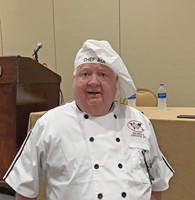
Presented
by "Chef" Ron Smith, CLPE
2 August 2021
at the IAI Conference
For years,
ISO accredited agencies have been required to participate in a
proficiency testing program that seeks, in part, to evaluate a
laboratory’s
performance. Accrediting bodies are required in turn, to take account
of the participation and performance of accredited laboratories. For
some agencies this is seen as a bothersome concept and one that is met
with disdain by many practitioners. For that reason, PT providers have
been encouraged, by market pressure, to keep the tests straightforward
and on the easier side of the difficulty equation. This, my good
friends and colleagues, has led to our profession being appropriately
chastised by those who seek to question the results of our
examinations. It is time to face the fact that we must, as forensic
practitioners, be willing to incorporate proficiency testing samples
which DO fairly represent what we see in actual casework.
Organization of Scientific Area
Committees (OSAC) General Update
Presented by Stephen
Greene, CLPE
2 August 2021 at the
IAI Conference
Stephen
Greene, IAI Board Member and IAI representative to the Forensic Science
Standards Board (FSSB) of the OSAC provided an overview and update of
the activities and goals of the OSAC.
When is Their Best Not Good Enough?
Presented by Matthew
Marvin, CLPE, CFWE
2 August 2021 at the
IAI Conference
Many agencies
use visual acuity examinations (also known as form blindness testing)
when hiring new examiners. But why? Can’t anyone train to be a latent
print examiner? The short answer is no; hence the visual acuity exam.
But do visual acuity exams really work in determining ability? Can they
be used beyond testing for ability to test for individuals with the
best abilities? Let’s find out!!
You
will find an excellent resource portal for all things involving latent
prints (and other forensic disciplines) at Brianne Breedlove's Uncover
Forensics website. Latent Print Examiner Brianne Breedlove's
Uncover Forensics Resources page includes the following and more:
o
Newsletter Subscriptions
o
Journals & Magazines
o
Podcasts
o
Community Forums
·
...and more...
Fingerprint Spoofing Research
Prepared by
Professor Martin Drahanský and team
Brno
University of Technology (BRUT), Faculty of Information Technology
Brno, Czech
Republic
On 9 February 2021, Professor Martin
Drahanský gave a virtual presentation on behalf of the European
Association for Biometrics. The presentation was titled "Fingerprints
in Forensic Verifications" and focused primarily on fingerprint
spoofing research.
The slides show a variety of artificial
fingerprint production methods using a variety of different materials
and processes (wax, laser printing, etching, etc.) as well as the
generation of realistic artificial live scan fingerprints from a single
minutiae (with no image, only from x/y/theta minutiae coordinates).
Artificial skin creases, warts and other skin conditions are created,
as well as artificial pressure, movement and other distortions which
are often introduced by genuine fingers during capacitive, optical,
swipe and other live scan processes.
The slides also include links to request download permission for the
following software developed by BRUT:
- Fingerprint Image Quality Visualizer
- Synthetic Fingerprint Damage Simulator and Generator
Click here to see future events (and virtual
presentations) scheduled by the European Association for Biometrics.
Many of the virtual presentations are free of charge.
Two
New Latent Print Latent Print Research Publications:
1. Hicklin RA, Ulery BT, Ausdemore M, Buscaglia J. “Why do latent
fingerprint examiners differ in their conclusions?” Forensic Science
International 320, Nov 2020.
https://doi.org/10.1016/j.forsciint.2020.110542
2. Kalka ND, Beachler M, Hicklin RA. “LQMetric: A Latent Fingerprint
Quality Metric for Predicting AFIS Performance and Assessing the Value
of Latent Fingerprints.” Journal of Forensic Identification 70(4)
443-463, Oct 2020.
The
above papers are part of a total of 14 publications in the FBI
Lab/Noblis latent print quality/black box/white box series of studies:
3. Hicklin
RA, Ulery BT, Busey TA, Roberts MA, Buscaglia J. “Gaze behavior and
cognitive states during fingerprint target group localization.”
Cognitive Research: Principles and Implications, 2019 4:12.
https://doi.org/10.1186/s41235-019-0160-9
4. Ulery
BT, Hicklin RA, Roberts MA, Buscaglia J. “Factors associated with
latent fingerprint exclusion determinations.” Forensic Science
International, 275:65-75, June 2017.
http://www.fsijournal.org/article/S0379-0738(17)30065-8/
5. Ulery
BT, Hicklin RA, Roberts MA, Buscaglia J. “Data on the interexaminer
variation of minutia markup on latent fingerprints.” Data in Brief, 8:
158–190, September 2016.
http://www.ncbi.nlm.nih.gov/pmc/articles/PMC4889892
6. Ulery
BT, Hicklin RA, Roberts MA, Buscaglia J. “Interexaminer variation of
minutia markup on latent fingerprints.” Forensic Science International,
264:89-99, July 2016.
http://dx.doi.org/10.1016/j.forsciint.2016.03.014
7. Ulery
BT, Hicklin RA, Roberts MA, Buscaglia J. “Changes in latent fingerprint
examiners’ markup between Analysis and Comparison.” Forensic Science
International 247(2014):54-61; Feb 2015.
https://doi.org/10.1016/j.forsciint.2014.11.021
8. Ulery
BT, Hicklin RA, Roberts MA, Buscaglia J. “Measuring what latent
fingerprint examiners consider sufficient information for
individualization determinations.” PLoS ONE 9(11): e110179, Nov 2014.
https://journals.plos.org/plosone/article?id=10.1371/journal.pone.0110179
9. Kalka
ND, Hicklin RA. “On relative distortion in fingerprint comparison.”
Forensic Science International 244(2014), 78-84, Nov 2014.
https://doi.org/10.1016/j.forsciint.2014.08.007
10. Ulery
BT, Hicklin RA, Kiebuzinski GI, Roberts MA, Buscaglia J. “Understanding
the sufficiency of information for latent fingerprint value
determinations.” Forensic Science International 230(1-3):99-106; July
2013.
https://doi.org/10.1016/j.forsciint.2013.01.012
11. Hicklin
RA, Buscaglia J, Roberts MA. “Assessing the Clarity of Friction Ridge
Impressions.” Forensic Science International 226(1-3):106-17; March
2013.
https://doi.org/10.1016/j.forsciint.2012.12.015
12. Ulery
BT, Hicklin RA, Buscaglia J, Roberts MA. “Repeatability and
Reproducibility of Decisions by Latent Fingerprint Examiners.” PLoS ONE
7(3), March 2012.
https://journals.plos.org/plosone/article?id=10.1371/journal.pone.0032800
13. Hicklin
RA, et al; “Latent Fingerprint Quality: A Survey of Examiners”; Journal
of Forensic Identification 61(4), July 2011.
14. Ulery
BT, Hicklin RA, Buscaglia J, Roberts MA. “Accuracy and Reliability of
Forensic Latent Fingerprint Decisions.” Proceedings of the National
Academy of Sciences 108(19), April 2011.
https://www.pnas.org/content/108/19/7733
NIST has Launched an Updated Organization of Scientific Area
Committees. See details at
https://www.nist.gov/news-events/news/2020/10/nist-launches-updated-organization-scientific-area-committees-forensic
The Next IAI
Conference is August 1st through 7th, 2021
The next IAI conference will be August 1 through 7, 2021 at the Gaylord
Opryland Resort in Nashville, Tennessee, USA
More details are available at the IAI website.
An Update on Strengthening Forensic Science
in the United States - A Decade of Development at NIST
Presented by Robert Ramotowski
Forensic Science Research Program Manager
Special Programs Office
National
Institute of Standards and Technology (NIST)
On 12 November 2019 in Washington DC,
a one-day conference titled "AN UPDATE ON STRENGTHENING FORENSIC
SCIENCE IN THE UNITED STATES: A DECADE OF DEVELOPMENT " commemorated
the 10th anniversary of the pathbreaking National Academies of Science,
Engineering and Medicine (NASEM) report “Strengthening Forensic Science
in the United States: A Path Forward,” a report that
challenged the way forensic science is conducted and the way it is
presented in the courts.
Sessions addressed developments during the past decade in the forensic
sciences and in the courts, as well as in federal agencies and
laboratories. The conference was jointly sponsored by the
American Association for the Advancement
of Science (AAAS), the Innocence Project and NIST, in collaboration
with NASEM.
Here is a link to a video of some of the conference (the last
eight minutes of the 1 hour, 20 minute video include comments from
Austin Hicklin and Ed German).
Here is the AAAS Website for the
conference.
White Paper - The Performance of Latent
Print Examiners as Revealed by Eye Tracking Methodologies
by Dr. Shiquan Liu
Institute of
Evidence Law and Forensic Science
China University of Political Science and Law
Beijing, China
and
Dr. Zhou Jie
East China Normal University
Shanghai, China
Presented at
the International Association for Identification Annual Forensic
Education Conference,
12 July - 16 August 2019 in Reno, Nevada
The
complicated task of comparing fingerprint photos for identification
relies on perceptual learning processes and requires human experience.
This project recorded the eye positions and eye fixation patterns of 15
expert latent print examiners, 15 primary latent print examiners and 15
novice participants. The project included two time limitation variants
and three levels of comparison difficulty. The eye tracking results
reflect where and how long participants looked at specific impressions
areas while making decisions.
Friction
Ridge Resources
by Steve Brock, CLPE
Latent
Fingerprint Examiner Supervisor
Santa Clara County Sheriff's Office
San Jose, California
Presented at the International Association for Identification Annual
Forensic Education Conference during 12 July - 16 August 2019 in Reno,
Nevada
This lecture includes a comprehensive list of some of the most
accessible resources to aid latent print examiners in staying abreast
of current literature, research, technology, training, and much more.
Captivating
the Jury
by Hillary Daluz
Instructor,
Tri-Tech Forensics
Forensic Specialist, Forensic Identification Services
Author, CRC Press
Presented at
the International Association for Identification Annual Forensic
Education Conference during 12 July - 16 August 2019 in Reno, Nevada
This lecture examines expert testimony from a juror's perspective and
discusses methods for captivating any jury. Have you ever testified as
an expert witness only to notice the jurors' eyes glazed over? Is juror
#4 taking notes, or doodling? In order to be successful expert
witnesses, and thus successful forensic scientists, we must be able to
educate the jurors who have the responsibility of determining the
veracity and weight of our opinions. This lecture examines expert
testimony from a juror's perspective and discusses methods for
captivating any jury.
AFIS:
How to Get More Hits
by Brianne Breedlove
Napa County
Sheriff’s Office
Napa,
California
Presented at
the International Association for Identification Annual Forensic
Education Conference during 12 July - 16 August 2019 in Reno, Nevada
These slides
cover various ideas about AFIS searching procedures, methods of testing
those procedures and suggestions for quality assurance measures to
ensure procedures are consistently effective over time.

Click
the above image to see a panoramic image
of the more than 1,300 IAI delegates at the opening ceremony if the IAI
Conference on 12 August 2019.
A Note for
FBI NGI Users...
One
of the most valuable pieces of fingerprint-related information shared
at the 2018 IAI Conference involves FBI Lab and CJIS research about
about NGI latent print search result candidate scores. At the IAI
Conference in San Antonio, FBI Latent Print Examiner Kyle Tom explained
that preliminary research showed that when the matching scores of the
#1 and #2 candidates have a difference of 1,250 or more, 83.5% of the
time it will be an identification.
This is important because it means all agencies should consider
implementing a policy that any such 1,250 or more difference in NGI
candidate responses should require review by more than one examiner -
either because the first examiner made an identification, or because
there is an increased chance of an erroneous exclusion. Hopefully, the
FBI will publish research on this topic in the future.
Some agencies embrace the opinion that allowing examiners to see the
matching scores in candidate lists biases them and should be precluded.
The current chair of the OSAC Friction Ridge Subcommittee AFIS Best
Practices Task Group (Mike French) and I are both of the opinion that
AFIS matching scores are an important objective measurement which can
lend valuable information to the examination process and aid quality
assurance.
- Ed German
Certified Latent Print Examiner, IAI
Certified Biometrics Professional, IEEE
Current Trends in Legal Challenges to Fingerprint Evidence
by Amy
Watroba, Asst. State's Attorney
Forensic Science Unit
Cook County State's Attorney's Office
Chicago, Illinois
Presented
at the International Association for Identification Annual Educational
Conference during 29 July - 3 August 2018 in San Antonio, Texas
These slides address recent types of legal challenges to latent print
evidence, what you can expect from defense attorneys, and much more.
Ms. Watroba supports prosecutors in the Cook County (Chicago) area, but
welcomes inquiries from latent print examiners and prosecutors
anywhere. Her contact details are on the last slide.
FBI Next Generation Identification
by William G.
McKinsey
FBI CJIS Biometric Services Section Chief
Presented
at the International Association for Identification Annual Educational
Conference during 29 July - 3 August 2018 in San Antonio, Texas, USA
How does the FBI perform 300,000 searches per day against 140 million
fingerprint records with superb accuracy? This informative update
describes NGI's improved performance with additional modality
implementations (face and iris) and new services. Many US state and
local forensic scientists consider the FBI's NGI system as America's
most important and valuable crime-solving asset.
IAI Latent Print Certification Board
Update- 2018
by Stephanie
Howard, CLPE
Ontario Provincial Police
LPCB Chair
Presented
at the International Association for Identification Annual Educational
Conference during 29 July - 3 August 2018 in San Antonio, Texas, USA
This excellent presentation updates activities of the
IAI's LPCB during the past year, including details about test
impressions which caused decertification of examiners (8% failure
rate).
Discussion after the presentation included recommendations by many
CLPEs present to cease decertification due to one missed ident (in the
same manner that not identifying all impressions during initial
certification testing is not a failure). The LPCB explained they will
take the recommendations received during the meeting (and all other
communications) under consideration.
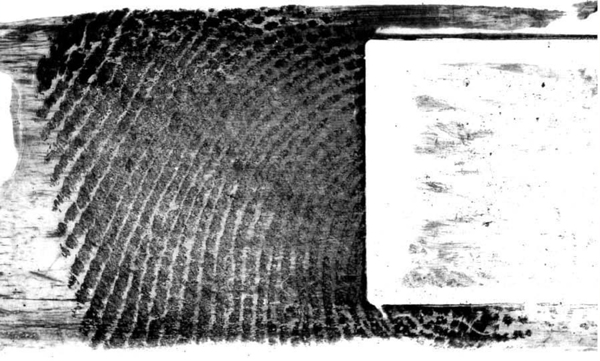
Click
on the above image to see a larger version of the print "missed" most
often during recertification testing.
Universal Latent Workstation (ULW) in the Next Generation
Identification (NGI) World v6.67
by Melissa
Halpenny
FBI CJIS
Presented
at the International Association for Identification Annual Educational
Conference during 29 July - 3 August 2018 in San Antonio, Texas, USA
Everything you need to know about updated features in the FBI's version
6.67 of ULW. The modern image quality metrics, unique comparison tool
and other features make the software valuable even to forensic experts
(latent print examiners) who do not search the FBI's national database.
Slide 20 includes links for software download by authorized
agencies/personnel, including foreign offices/personnel from most
countries.
Small Agency Latent Print AFIS Capabilities in 2018
by Ron Smith,
CLPE and Ed German, CLPE
Presented
at the International Association for Identification Annual Educational
Conference during 29 July - 3 August 2018 in San Antonio, Texas, USA
Hundreds of latent print examiners at small agencies throughout America
are unable to search unsolved case latent prints in the FBI's national
database. In the nation's fifth largest state (Illinois), very few
local agency latent print examiners can search latent prints at the
FBI... meaning months or years of turn-around time before examination
begins on evidence they submit to Illinois' overworked (and
under-financed) state crime labs.
Additionally, more than half of latent print examiners surveyed who
have current access through state or regional networks desire to be
able to submit latent prints directly to the FBI via email (an avenue
which was shut-off about three years ago for most agencies to even
explore ).
Some believe the major AFIS vendors are pushing back against agencies
being able to directly search the FBI without buying $30K to $50K
terminals to route through the same AFIS vendor's state systems. Other
experts see push-back from state law enforcement to allow local
agencies to circumvent their networks (electronic or crime lab
snail-mail) even though directly searching the FBI would often solve
investigations faster and overall reduce criminal activity in the
impacted jurisdictions.
Click here to see a PNG file displaying all the small agency
responses. Depending on your browser, you
may need to click on a small magnifying glass icon or
otherwise zoom in to increase the image width to a legible view. A few
survey outliers seemed to list the CSI unit or investigative Division
population in lieu of the total law enforcement agency number of
employees, but most of the participants' responses seemed copacetic.
AFIS
Training Practices: Swiss Precision - American Cowboy
by Kurt
Aebersold and Carey Hall, CLPE
Presented
at the International Association for Identification Annual Educational
Conference during 29 July - 3 August 2018 in San Antonio, Texas, USA
This presentation addresses the well-ordered Swiss AFIS training
program (under one organization) versus the myriad approaches happening
in the American AFIS environment.
Benefits of a Regional or Local AFIS
by David
Tivin, CLPE and Neil Runte
Presented
at the International Association for Identification Annual Educational
Conference during 29 July - 3 August 2018 in San Antonio, Texas, USA
These industry presentation slides by Gemalto Cogent and the
Westchester, Ohio Police Department outline some of the reasons
hundreds of local agencies in America utilize local or regional AFIS
systems to accomplish timely and accurate crime solving not always
possible through state and federal systems.
DNA or Latent Prints? Or Both?
by
Raymond A, Jorz, FFS, Senior Fingerprint/Firearms Examiner
and
Karen M. Zavarella, Ph.D., Forensic Analyst
Presented at
the CUGI Annual Educational Conference - 30 Oct-1 Nov 2017
These slides include
information about how to successfully harvest both latent print and DNA
evidence from the same specimens/surfaces.
The collection of DNA from latent print ridge detail by peeling open
tape or hinge lifters in the lab, and from cyanoacrylate-developed
ridge detail, and other evidence scenarios are addressed.
The need for sterile, single-use brushes and powders is addressed,
along with their study results about how little DNA cross-contamination
they found upon analyzing brushes/powder used at multiple (many) crime
scenes.
Testimony Issues in a Post-PCAST World
November 2017 by Rachelle Babler, CLPE
Presented at
the CUGI Annual Educational Conference - 30 Oct-1 Nov 2017
These slides address some of the issues and concerns for testifying in
modern times, when Defense knows there is a need for transparency in
reports and testimony to comply with current standards, guidelines and
best practices.
The slides also address the PCAST report error of not considering the
clerical errors (as much as 35 of 42 answers) in the Miami Dade study;
and the fact PCAST ignored that 100% of errors in the Miami Dade and
FBI/Noblis Black Box studies were caught during subsequent verification
actions.
Unusual, Genius and Stupid Tactics for More
Fingerprint and Face Identifications (2017 Update)
by Ed German,
CLPE
Presented
at the CUGI Annual Educational Conference - 30 Oct-1 Nov 2017
This presentation outlines numerous options to consider for identifying
more persons in current cases, and some cold cases, by working smarter
(not harder) to balance accuracy, timely support and
thoroughness.
Latent Print Report Appendix
October 2017 by Ed German, CLPE
Attaching an appendix at the end of latent print reports may help with
transparency in communicating limitations, methods and overall
information.
Here is a sample Latent Print
Report Appendix. This appendix is used by the Macon County (Illinois)
Sheriff's Office (MCSO).
The MCSO appendix is modeled after an
FBI Lab Latent Print Report appendix, but with FBI-specific
references modified to include SWGFAST, etc., documents.
The FBI Lab Latent Print Report
appendix is excerpted (pages 5 through 7) from the online document here.
A Review of
Recently Published Fingerprint Research (2016-2017)
by
Robert Ramotowski, US Secret Service
Presented at the International Association for Identification 102nd
Annual Educational Conference - August 2017
Another valuable annual review of friction ridge research publications.
Presented at the International Association for Identification 102nd
Annual Educational Conference - August 2017
This presentation includes information about how to structure
validation studies for common processes (e.g., ninhydrin) as well as
novel methods. An example of a recent study conducted in the
presenter's laboratory is included.
Old vs. New Fingerprint Information Exchange
by Michaela
Spankova, Stefania Bohmerova, Dusan Mikulaj Institute of Forensic
Science, Slovak Republic
Poster presentation at the International Association for Identification
102nd Annual Educational Conference - August 2017
This presentation addresses the little known pioneering work of the
Denmark Police who initiated the world's first electronic encoding of
fingerprint minutiae (incorporating some features of the modified Henry
classification system) facilitating remote electronic identification
(confirmation that minutiae corresponded) and exclusion.
Best viewed by downloading to
scroll-down through the individual slides.
The NIST (NBS) 1969 technical note reviewing Jörgensen's system is online here. The 1922 English
version of a book describing Jörgensen's "Distant Identification"
system is online here.
Poster presentation at the International Association for Identification
102nd Annual Educational Conference - August 2017
This presentation addresses the effects of various temperature and
humidity combinations over time for the development of latent prints.
Ambient development conditions (not artifically increased humidity)
were shown to be optimal in this study. The presentation diagram shows
a fuming cabinet with specimens positioned above the heated
cyanoacrylate.
Best viewed by downloading to
scroll-down through the individual slides.
IMPROVING
THE RIGOR OF THE LATENT PRINT EXAMINATION PROCESS
PhD Thesis by Austin Hicklin
Now publicly available, this interesting and informative document
details past, current and future developments, activities and ideas
impacting the quality and thoroughness of latent print examination work
in the demanding environment of the modern world.
Get the Latest Version of Universal Latent Print Workstation
(ULW 6.6.3 )...
Even if you do not currently submit latent print searches directly to
the FBI, you may Use ULW Extended Feature Set capabilities to help with
casework documentation of Level 1, 2 and 3 information. ULW
now
includes an offline comparison tool for use even if you have no AFIS.
-
ULW Brochure
Development of Latent Fingermarks from
Difficult Surfaces by Laser Light Sources
by Shiquan Liu, PhD
Institute of Evidence Law and Forensic Science China University of
Political Science and Law
Presented at the International Association for Identification
101st Annual Educational Conference - August 2016
This presentation explains successful laser development and
visualization techniques applied to difficult surfaces, including
bricks, stone, wood, train tickets and cloth. The presentation includes
contributions from Zhongliang Mi, Weisi Cai, and Brian
Dalrymple.
ENFSI Best Practice Manual for Fingerprint
Examination
by Maj. Aldo Mattei, PhD
RIS Carabinieri, Italy
Presented at the International Association for Identification
101st Annual Educational Conference - August 2016
This presentation addresses the Best Practice Manual for Fingerprint
Examination issued by the European Network of Forensic Science
Institutes (ENFSI). The manual considers fingerprint examination from
the receipt of items into a laboratory to the delivery of a report as a
seamless and interdependent process. It does not consider the recovery
of fingermarks from the crime scene, although much of the information
within the visualization chapter is relevant. The full manual is online
here.
The Strength of Conclusions
by Michelle Triplett, CLPE
King County, Washington
Presented at the International Association for Identification
101st Annual Educational Conference - August 2016
This presentation discusses a more accurate and transparent approach
for arriving at, and reporting, results. The full published paper
addressed by the presentation is online here.
A Review of Recently Published Fingerprint Research
by Robert Ramotowski, US Secret Service
Presented at the International Association for Identification
101st Annual Educational Conference - August 2016
This presentation provides a brief overview of a selection of articles
published since mid-2015.
Validation Studies in ISO 17025 Accredited Laboratories
by Robert Ramotowski, US Secret Service
Presented at the International Association for Identification
101st Annual Educational Conference - August 2016
This presentation addresses key elements of Level I, II and III
validation procedures, including documentation.
New
Paradigm for Fingerprint
Reporting Without Individualization
by Henry Swofford, Chief Latent Print Unit
US Army Criminal Investigation Laboratory
Presented during a Forensic Technology Center of Excellence webinar on
14 July 2016
In November 2015, the Defense Forensic Science Center (DFSC) issued an Information
Paper announcing the decision to cease using the terms
“individualization” and “identification” in latent print technical
reports and expert witness testimony. This presentation
explained the reasoning behind the new reporting language of the
DFSC.
For over 100 years, fingerprint evidence has been used as a valuable
tool for the criminal justice system. Relying on the
generalized premise of “uniqueness”, the forensic community has
regarded fingerprint evidence as nearly infallible having the capacity
to “individualize” the source of a fingerprint impression to a single
individual. While the uniqueness of a complete record of
friction ridge skin detail is generally undisputed, the extension of
that premise to partial and degraded impressions has become a central
issue of debate. Nevertheless, forensic science laboratories
routinely use the terms “individualization” and “identification” in
technical reports and expert witness testimony to express an
association of a partial impression to a specific known
source.
Over the last several years, there has been growing criticism among the
scientific and legal communities regarding the use of such terms to
express source associations which rely on expert
interpretation. The crux of the criticism is that these terms
imply absolute certainty and infallibility to the fact-finder which has
not been demonstrated by available scientific data. As a
result, several authoritative scientific organizations have recommended
forensic science laboratories not to report or testify, directly or by
implication, to a source attribution to the exclusion of all others in
the world or to assert 100% infallibility and state conclusions in
absolute terms when dealing with population issues.
Consequently, the traditional paradigm of reporting latent fingerprint
conclusions with an implication of absolute certainty to a single
source has been challenged. The underlying basis for the
challenge pertains to the logic applied during the interpretation of
the evidence and the framework by which that evidence is
articulated. By recognizing the subtle, yet non-trivial
differences in the logic, the fingerprint community may consider an
alternative framework to report fingerprint evidence to ensure the
certainties are not over or understated.
Out of the Frye-ing pan and into the Fire
by Francis P. Senese
Presented at the Illinois Division, International Association for
Identification's (IAI) 54th Annual Educational Conference - April 2016
This presentation details historical background and other important
factors to consider for Daubert, Frye and similar scientific process
challenge hearings.
Transmogrification
- Surgical incisions and rotation of fingerprint focal point areas
(e.g., cores, delta) before suturing.
Automated Face & FP Criminal Justice Resources
by Ed German
Presented at the Illinois Division, International Association for
Identification's (IAI) 54th Annual Educational Conference - April 2016
This presentation details face and fingerprint repositories US law
enforcement can leverage today to solve more crime... (even if they
have no in-house face experts).
NIST
Seeking Fingerprint Examiners for Facial Identification Study
Dear Colleague,
One of the key questions in forensics is measuring the accuracy of
facial forensic examiners. To address this question, we are
conducting the Measuring the accuracy of facial forensics
comparisons research study. This research study will
measure the performance of facial forensic examiners using the tools
and methods in their laboratory. We are recruiting facial forensic
examiners to compare the faces in 20 image-pairs and answer a
background survey.
We are also recruiting non-examiner face experts and fingerprint
examiners to take the same study. Non-examiner face experts
are familiar with faces but have not been trained in facial forensic
comparisons. We are looking for fingerprint examiners who do
not have experience in facial comparisons. Fingerprint
examiners have been trained forensic comparison but do not have
experience with faces. These two groups will allow for a
detailed analysis of the accuracy of facial forensics
comparisons.
By participating in this research study, you will assist in developing
a scientific measure of performance of facial forensic
comparison. These results may help meet the Daubert standard
for the admissibility of expert witness testimony.
By volunteering for this research study, you may request your accuracy
at comparing the extremely challenging faces in this study. If you are
willing to volunteer, please contact the principle investigator, Dr.
Jonathon Phillips, by email at jonathon.phillips@nist.gov or
by phone at +1
301-975-5348.
FBI's Biometric
Center of Excellence
by Nick Megna, Unit Chief, Biometric Center of Excellence, FBI CJIS,
Clarksburg, West Virginia
Presented at the International Association for Identification's (IAI)
100th International Educational Conference - August 2015
This presentation details current activities and future plans involving
FBI biometric projects including fingerprint, face, iris and voice
modalities.
A
Review of Recently Published Fingerprint Research
by Robert Ramotowski
Presented at the International Association for Identification (IAI)
100th International Educational Conference - August 2015
This presentation provides a partial overview of forensic science
articles appearing in (non-IAI) publications during 2014-2015.
A
Possible Model for R&D – Maintaining the “Scientist" in the
Forensic Scientist
by Eliot Springer, Deputy Director NYPD Police Laboratory, New York
City, NY
Presented at the International Association for Identification's (IAI)
99th International Educational Conference - August 2014
This presentation addresses obstacles and novel solutions to increase
research and development in the modern forensic science laboratory
environment.
Improving
Morale, Opening Lines of Communication, and Keeping the
Criminalist Engaged
by Eliot Springer, Deputy Director NYPD Police Laboratory, New York
City, NY
Presented at the International Association for Identification's (IAI)
99th International Educational Conference - August 2014
This presentation explains how implementing a variety of
outside-the-box ordinary, unusual, and fun activities can improve the
flow of communications, reduce stress, improve productivity and provide
other benefits.
IT Project in Poland Supporting LP
Development on Difficult Porous and Non-Porous Surfaces
by the Central Forensic Laboratory in Warsaw and the Police Academy in
Szczytno, Poland
Poster presentation at the International Association for
Identification's (IAI) 99th International Educational Conference -
August 2014
This poster from S. Zubanski, A. Tyzwa, T. Szcepanski, K. Klemczak and
U. Wieckiewicz outlines the planned development of software cataloguing
and documenting validated processes for latent print development on
difficult surfaces. Additionally, IT development will include
creation of a comprehensive electronic infrastructure supporting
forensic units with modern software solutions for real world
conditions. The project is supported by The National Centre for
Research and Development.
Fingermark Visualisation Manual
by Helen
Bandey, PhD
Presented at
the International Association for Identification's (IAI) 99th
International Educational Conference - August 2014
The
presentation explained and demonstrated the automated, interactive
fingerprint visualization manual. (These slides are not
interactive, but include screen shots of sample pages from various
sections.)
This manual replaces the widely used "Manual of Fingerprint Development
Techniques." It has been vastly revised and extended and it is
presented in a new style to reflect advances in both science and
operational practice.
The new manual has been implemented across all UK police forces. Others may
access the electronic manual from sources such as here.
Administrative Decisions within the
Universal Latent Workstation Software
by Patricia Mason, Training Instructor, FBI CJIS
Presented at
the International Association for Identification's (IAI)
99th
International Educational Conference - August 2014
This presentation explains new features of the FBI's newest (soon to be
released) ULW software. New capabilities include civil
database
searches, a direct email interface (still being developed), Next
Generation Identification (NGI) interface capabilities, and much more.
Understanding
Digital Image Processing
by Allison Loll, PhD, CLPE
Presented
at the International Association for Identification's (IAI)
99th
International Educational Conference - August 2014
This presentation (A Look Behind the Scenes: Understanding Digital
Imaging Processing) addresses important aspects of digital imaging,
including accurate and complete answers for image processing-related
questions in court.
Conducting
Forensic Science Research Projects
by Robert Ramotowski
Presented
at the International
Association for Identification's (IAI)
99th International Educational Conference - August 2014
Topics addressed include effective planning, research, design, conduct,
documentation and publication of forensic science research.
Latent Print Research Projects
by Robert Ramotowski
Presented
at the International
Association for Identification (IAI)
99th International Educational Conference - August 2014
This presentation covers a variety of US Secret Service research,
including the following
- Developing
Latent Prints on Coated Papers
- Developing
Latent Prints on Stone Papers
- Impact of
Latent Print Reagents on Ink Analysis
- Processing
Business Envelopes with Polystyrene Windows
-
Effect of Acidifying Ninhydrin on Latent Print Development
A
Review of Recently Published Fingerprint Research
by Robert Ramotowski
Presented at the International Association for Identification (IAI)
99th International Educational Conference - August 2014
It is difficult for most latent print examiners to keep up with
articles published in so many different journals. This presentation
provides a brief overview of a selection of articles published since
2013.
| If you are a Fingerprint
Professional, you should consider joining the IAI, The Fingerprint
Society, or both. |
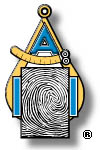 |

In
2017, The Fingerprint Society merged with The Chartered Society of
Forensic Sciences (CSFS) and has since been known as the CSFS
Fingerprint Division |

World's
Largest Database
With over 200 million fingerprint,
face and iris biometric records. UIAI plans
to collect as many as 600 million multi-modal records.
India's
Unique Identification project is also known as Aadhaar, a word meaning
"the foundation" in several Indian languages. Aadhaar is a
voluntary program, with the ambitious goal of eventually providing
reliable national ID documents for most of India's 1.2 billion
residents.
With
a database larger than any other in the world, Aadhaar's ability to
leverage automated fingerprint and iris technology enables rapid and
reliable searching and identification impossible to accomplish with
just fingerprint technology in such a large system, especially when
searching children and elderly residents' biometric records.
The
Philosophy of Friction Ridge Examination ...an
interesting presentation by Boyd Baumgartner. Here is a link
to other vimeo presentations Boyd has created.
Tips, Tricks and Best Kept Secrets
(Universal Latent Workstation and
NGI) presented
11 August 2011 by Jeff Carlyle at the 96th Annual IAI
Conference
.
Latent Print
Development Techniques for Thermal Paper presented 10 August 2011 by Aldo Mattei and Federico
Cervelli at the 96th Annual IAI
Conference.
SWGFAST
Glossary and other Documents
NIST Pattern Evidence Home Page
NAS Report:
Strengthening
Forensic Science in the United States: A Path Forward
Access the 41-page Free
Executive Summary here.
Report Description from the National Academies Press:
"Scores
of talented and dedicated people serve the forensic science community,
performing vitally important work. However, they are often constrained
by lack of adequate resources, sound policies, and national support. It
is clear that change and advancements, both systematic and scientific,
are needed in a number of forensic science disciplines to ensure the
reliability of work, establish enforceable standards, and promote best
practices with consistent application. Strengthening
Forensic Science in the United States: A Path Forward
provides a detailed plan for addressing these needs and suggests the
creation of a new government entity, the National Institute of Forensic
Science, to establish and enforce standards within the forensic science
community.
The benefits of improving and regulating the forensic science
disciplines are clear: assisting law enforcement officials, enhancing
homeland security, and reducing the risk of wrongful conviction and
exoneration. Strengthening Forensic Science in the United
States
gives a full account of what is needed to advance the forensic science
disciplines, including upgrading of systems and organizational
structures, better training, widespread adoption of uniform and
enforceable best practices, and mandatory certification and
accreditation programs."
News Release on the report.
Access the report here:
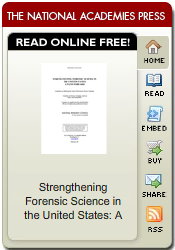
Webcast of 18 Feb 2009 NAS
briefing.
New
forensic term after 18 Feb 2009 (?):
Nif·ty
[ níftee ]
adjective
(comparative nif·ti·er, superlative nif·ti·est)
Definition:
1.
compliant with National Institute of Forensic Science requirements.
2.
stylish and good-looking: fashionable and good-looking
3.
agile: good, quick, and clever at doing something or using something
4.
very good: very good or effective
Latent
Prints: A Perspective on the State of the Science
October
2009 FBI.gov online commentary by eight of the FBI Laboratory's senior
Fingerprint Specialists/Latent Print Examiners
Identifying the Needs of the
Forensic Sciences Community
Interesting documents online
at the National Academies of Science Committee on Science, Technology
and Law
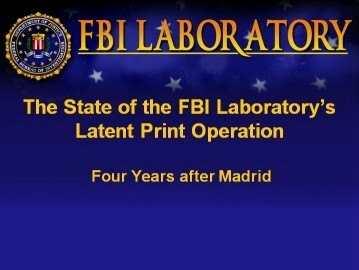
Presented by the FBI Laboratory
at the IAI Conference on 18 August 2008
Right-click and download before
opening these large files:
PDF
Slides (2.4 Mb)
PowerPoint Slides
(3.1 Mb)
Position Paper on Latent
Fingerprint Identification from the IAI...
29 Nov
2007, from the International Association for Identification.
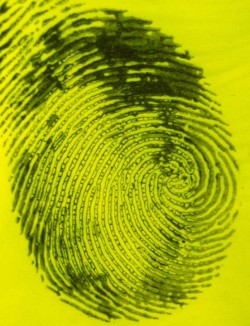
ACID YELLOW Development
of Bloody Latent Prints on Dark Surfaces...
27
Jul
2007
IAI
presentation,
courtesy
of
the
US
Army
Criminal
Investigation
Laboratory.
Right-click
here to download the large PowerPoint version of this
presentation, then open on your computer.
Right-click here to download the
large PDF version of this presentation, then open on your computer.
Ninhydrin Development without expensive or dangerous solvents. Research
from Korea...
Major Case
Prints DRAFT Card
A new card for recording all finger joints/tips and thenar (base of
palm) areas was drafted by SWGFAST.
See images of the new card here.
The
new card is intended to facilitate comprehensive record finger and palm
prints (AKA Major Case Prints) when fully completed with existing FBI
Fingerprint Card (Form FD-249 front
and back
) and FBI Palmprint Card (Form FD-884 front
and back
) records. The new card form number
is expected to be FD-884A.
MCP standardization will assist AFIS as more vendors design systems for
handling all friction ridge areas of the hands.
|
The
Madrid Error Prints, including Algerian Ouhnane Daoud's record print,
are online here
.
The
US Department of Justice's March 2006 documents related to the Madrid
Error are online at
https://oig.justice.gov/sites/default/files/archive/special/s0601/PDF_list.htm
(Recommend
downloading these files before opening from your computer).
Among other findings,
the 330 page report criticizes the FBI Laboratory's Examination SOP,
and SWGFAST guidelines, as repetitive, vague and general.
The five-page conclusion from the report is available here (much smaller file)
.
|
"
The Myth of Goats :
How many people have fingerprints that are hard to match?"
by Austin Hicklin, Craig Watson and Brad Ulery
Published as a NIST Interagency Report, NISTIR 7271
|
|
|
|
Is Fingerprinting a Science?
What is a
Daubert Hearing?
What is the
correct pronunciation of Daubert?
Frequently Asked Questions
Search this web site
Expert topics area
General Information area for
Students and most non-experts
Investigator topics area
|
New
Books on AFIS and Biometrics
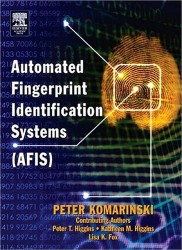
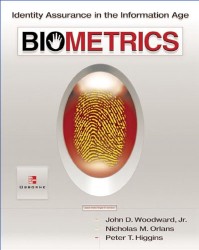 |
|
Judge
Pollak Reverses Himself
The Honorable Louis H. Pollak wrote:
Based
on the foregoing considerations, I have concluded that arrangements
which, subject to careful trial court oversight, are felt to be
sufficiently reliable in England, ought likewise to be found
sufficiently reliable in the federal courts of the United States,
subject to similar measures of trial court oversight. In short, I have
changed my mind. "Wisdom too often never comes, and so" - as Justice
Frankfurter admonished himself and every judge - "one ought not to
reject it merely because it comes late." (7 January 2002
Court Decision partially against fingerprints Court
Decision )
PA
v. Vikara, Convicted After Starrs' Testimony
Prof.
James Starrs was called as an expert in the methodology of fingerprint
comparison, but renounced much of his written report during
cross-examination. Hearing was October 22, 2001... Defendant
convicted of 1st Degree Murder and Robbery... sentenced to death.
Defendant died January 10, 2002 in the State Correctional Institute at
Camp Hill, PA.
Critical
Author's Opinion Ruled Junk Science
A
New York state judge listened to testimony by Simon Cole about why he
considers the science of fingerprint identification suspect... and
ruled, ..."Even applying the Federal Court's Daubert Standard, what Dr.
Cole has offered here is 'junk science"...
( Court
Decision ) ( Cole's Testimony )
Notorious
Daubert Challenge - Bin Laden's Terrorist Tried It
After his April 6, 2001 conviction, Ahmed Ressam
was known to most of us as just another criminal who failed in his bid
to exclude incriminating fingerprint evidence. As Paul Harvey would
say, we now know the rest of the story...
| A Statement Regarding
Am eri can
News Shows and Articles
about Fingerprint Evidence Credibility in Court...
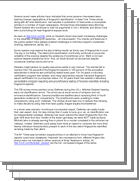
|
Expert Topics
General Information
Investigator Topics
|
|
|





